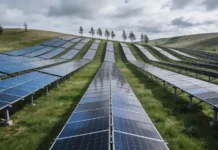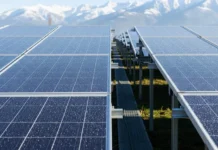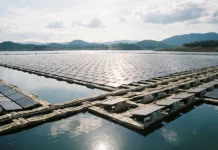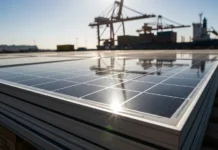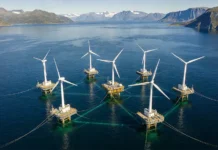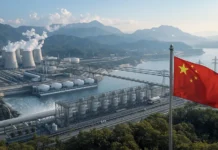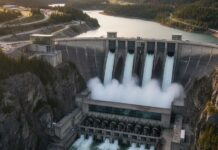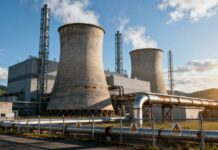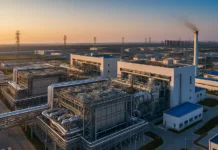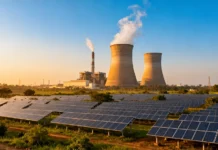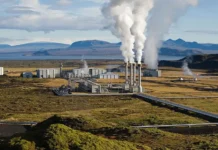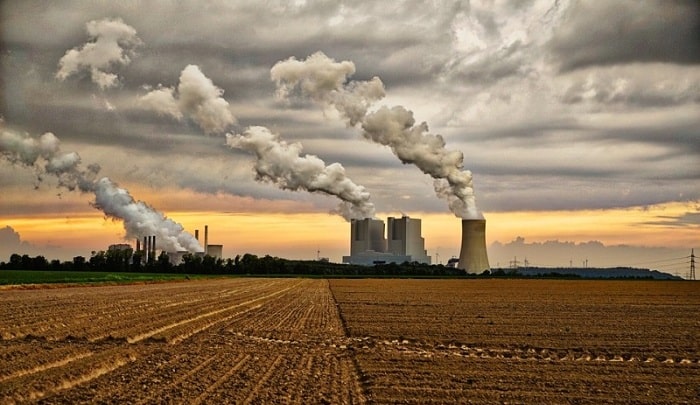The state-owned utility NTPC’s recent announcement that it will stop pursuing new coal-fired power projects is part of an ongoing strategic shift into renewable energy by India’s largest thermal power generation company.
NTPC’s long-term target of about 32 GW of renewables by 2032 — 24.6% of its total planned capacity of 130 GW — makes it a key player driving the electricity sector transition, in line with India’s ambitious goal of 450 GW of renewables and hydropower by 2030.
In August 2019, NTPC announced it planned to set up a 5 GW ultra-mega industrial solar park in Kutch, Gujarat, with an investment of INR 20,000 crore (USD 2.7 billion).
Then, amidst the gloom of the economic downturn exacerbated by the Covid-19 pandemic came the positive news that the Gujarat government is starting the land allotment process for a massive 42 GW ultra-mega renewable energy park in Kutch.
When fully commissioned, this will be world’s largest renewable energy facility, 20 times the size of the world’s current largest operational solar park at Rajasthan’s Bhadla.
NTPC is reported to be allotted 10,000 hectares of land for its planned 5 GW ultra-mega solar park in Kutch as part of the larger 42 GW of planned capacity.
The company currently has 2.3 GW of renewable energy capacity under construction. When commissioned, this will take NTPC’s renewables portfolio to 7.3 GW.
In financial year 2019-20, NTPC acquired two of India’s largest hydro power utilities: North-Eastern Electric Power Corporation (NEEPCO) and THDC India (THDCIL), adding 3.3 GW (1.8 GW from NEEPCO and 1.5 GW from THDCIL) to its existing capacity. This acquisition also included 527 MW of NEEPCO’s gas-fired capacity.
Acting a guarantor
NTPC, along with Solar Energy Corporation of India, has also been playing an important role in facilitating renewable energy tenders by acting as a guarantor between renewable power producers and distribution companies (discoms).
The company also plans to gradually expand into electric vehicle charging infrastructure as the electrification of transport creates a convergence between the power and transportation industries.
However, while expanding into renewables, NTPC will continue to deliver thermal power for decades to come. As of August 2020, it has 52.9 GW of coal-fired capacity operational, which is a quarter of India’s total coal-fired capacity.
The financial year 2019-20 saw NTPC commission 3.4 GW coal-fired capacity against its target of 5.2 GW. In July 2020, it also added 0.8 GW of Unit 2 of Lara Super Thermal Power Project in Chhattisgarh.
The addition of new coal-fired capacity amidst no growth in power demand during 2019-20 cannibalised performance of NTPC’s own capacity. Based on reported Plant load Factor (PLF) and Plant Availability Factor (PAF), IEEFA estimates that NTPC’s coal plant utilisation factors reduced to 61.2% in 2019-20 from 66.9% in 2018-19.
Moreover, increasing landed fuel costs and capacity charges from the incremental capacity saw NTPC’s average thermal tariff soar in 2019-20.
NTPC’s average tariffs increased 15% from INR 3.39 per kWh in 2018-19 to INR 3.90 per kWh in 2019-20, whilst renewable energy tariffs in India and globally continue on a consistently downward trajectory.
In June 2020, Solar Energy Corporation of India’s (SECI) 2 GW solar auction delivered India’s lowest-yet renewable energy tariff at INR 2.36 per kWh (USD 31 per MWh) with zero indexation for 25 years.
SECI estimates the levelised cost of electricity for discoms for this tender to be INR 1.13 per kWh (USD 15 per MWh) if India experiences 5% annual inflation over the 25-year length of the project.
Biomass moves
In a move that could potentially reduce its overall fuel costs, NTPC recently invited bids for supply of six million tonnes per annum (mtpa) biomass pellets made out of stubble and husk to co-fire in its 17 coal-fired power plants across the country.
NTPC plans to have 10% of biomass co-fired with coal. This will materially reduce stubble burning, a major cause of air pollution in northern India, while also providing farmers a much needed second source of income.
NTPC has 11.7 GW of coal-fired power plants under construction and 7.4GW of coal-fired capacity under pre-construction development stages with various regulatory and environmental approvals pending, according to data from Global Energy Monitor’s (GEM) Global Coal Plant Tracker (GCPT).
IEEFA believes that NTPC will likely discontinue its 7.4 GW of pre-construction capacity. There is also a clear risk of underperformance on its 11.7 GW of under-construction power plants, which is evident in the consistently declining utilisation rates in the five years to 2019-20 due to the addition of new capacity well ahead of demand growth.
Under continuing pressure from deflationary renewable energy tariffs, India’s coal-fired fleet’s utilisation rates have collapsed to an unsustainable low of below 60% for the last three years.
The thermal power sector is also facing difficulties with getting domestic coal linkages, water unavailability, environmental litigation, financial stress of state-owned discoms and delays in construction.
As a result, the sector has accumulated USD 40-60 billion in stranded assets.
Governments, investors and utilities across the globe are rapidly moving away from coal as they realise the need to accelerate the transition to a low-cost, low-emission and sustainably profitable energy economy.
To date, 142 major financial institutions including multilateral development banks, insurers, export credit agencies and private banks have announced coal-exclusion policies.
In the last week of September, KB Financial Group became the first South Korean financial entity to renounce coal when it retracted plans to invest in coal-fired power projects. The company has decided instead to direct finances to low-carbon and renewable energy projects.
This followed news from Poland, one of the world’s top coal-producing countries, that the state-owned bank PKO BP had adopted a coal policy in 2020 that rules out financing new coal and lignite mines and coal plants. The policy also commits Poland’s largest bank to a gradual reduction in financial support for existing companies in the coal sector but does not set absolute targets for reductions.


